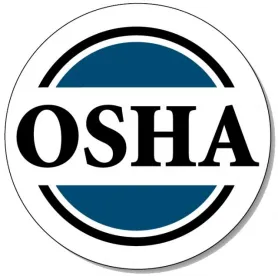The US Occupational Safety and Health Administration (OSHA) recently announced its plan to hold a stakeholder meeting in Washington, D.C. on July 17, 2017, “to discuss the future direction of the agency’s Voluntary Protection Programs (VPP),” the agency’s initiative to prevent workplace injuries and illnesses through cooperation, collaboration, and targeted hazard prevention and control. A second stakeholder meeting is also tentatively scheduled to occur in New Orleans on August 28, 2017, but it has not yet been confirmed.
The discussion, which will be led by OSHA agency representatives, is reported to include the opportunity for comments and suggestions from the public, namely industry shareholders, on potential avenues for action in relation to the agency’s VPP agenda. Specifically, OSHA reports that it “is seeking to reshape VPP so that it continues to represent safety and health excellence, leverages partner resources, further recognizes the successes of long-term participants, and supports smart program growth.” Accordingly, some of the specific questions of which OSHA is seeking stakeholder input include:
-
What can the agency do to enhance and encourage the efforts of employers, workers and unions to identify and address workplace hazards through the VPP?
-
How can the agency support increased participation in VPP while operating with available resources and maintaining the integrity of the program?
-
How can the agency modify VPP to enhance the efforts and engagement of long-term VPP participants?
-
How might the agency modify Corporate VPP for greater leverage and effectiveness?
-
How can the agency further leverage participant resources such as Special Government Employees?
Other input will certainly be entertained as well, and written comments are already flowing in to the agency since its recent announcement just this past week.
The current VPP is nothing new. It was established in 1982, with federal worksite eligibility beginning in 1998, in an effort to “recognize employers and workers … who have implemented effective safety and health management systems and maintain injury and illness rates below national Bureau of Labor Statistics averages for their respective industries.” In accordance with the VPP, those “recognized employers” are exempt from OSHA programmed (not complaint or accident) inspections, once they submit an OSHA application and undergo a rigorous onsite evaluation by a team of OSHA safety and health professionals. (Participants are re-evaluated every three to five years in order to remain active.) Under the VPP, it has been OSHA’s stated goal to collaborate with management and labor to work “cooperatively and proactively to prevent fatalities, injuries, and illnesses through a system focused on: hazard prevention and control; worksite analysis; training; and management commitment and worker involvement.” OSHA reports that VPP’s success has been “impressive” with statistics showing that the average VPP worksite has “a Days Away Restricted or Transferred (DART) case rate of 52% below the average for its industry,” even though VVP sites do not typically start out with such low rates.
The renewed focus on the program signals a reinvigorated effort to work cooperatively with employers in order to best achieve OSHA’s mandate of assuring “so far as possible every working man and woman in the Nation safe and healthful working conditions and to preserve our human resources – by encouraging employers and employees in their efforts to reduce the number of occupational safety and health hazards at their places of employment, and to stimulate employers and employees to institute new and to perfect existing programs for providing safe and healthful working conditions.” Employers can join this conversation either by attending the meeting in person or submitting comments online.
The meeting will be held between 9 a.m. to 5 p.m. in the Frances Perkins Building, U.S. Department of Labor, 200 Constitution Ave., NW, Washington, DC 20210. Those wishing to attend must register by July 10 at VPP Stakeholder Meeting Registration. Written comments can also be submitted and reviewed here. The docket closes September 15, 2017.




 />i
/>i

